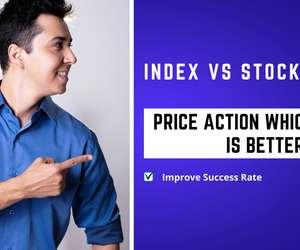Volume Weighted Average Price (VWAP) is a trading benchmark used by traders to determine the average price of a security based on the total volume traded over a specific period of time. It is calculated by taking the sum of all traded prices for a security, and dividing by the total number of shares traded during that period. It is often used as a benchmark for institutional traders to measure the performance of their trades, and is also used by traders to determine the fair value of a security.
The VWAP can be plotted as a line on a chart and used to identify trends in the trading of a security
One on component of this indicator is Volume hence it can be used with Stock, F&O having Volumes.
How to trade with VWAP?
VWAP can be used as a trading strategy in a variety of ways. Here are a few examples:
-
Buying or Selling at VWAP: Traders may look to buy a security when its price is below the VWAP, and sell when the price is above the VWAP. This strategy is based on the idea that a security's price will tend to revert to its average value over time.
-
VWAP Crossover: Traders may also look to buy or sell a security based on the relationship between its current price and the VWAP. For example, they may look to buy a security when its price crosses above the VWAP and sell when the price crosses below the VWAP.
-
Volume Weighted Moving Average Crossover: A VWAP can be used in combination with a moving average to create a crossover strategy. For example, a trader could buy when the security's price crosses above the VWAP and sell when the price crosses below the VWAP.
-
Trend Following: Traders may also use VWAP as a trend-following indicator. For example, if the VWAP is trending higher, a trader may look to buy, and if the VWAP is trending lower, a trader may look to sell.
It's important to note that these are just examples and that trading strategies can be quite complex and require significant knowledge and experience. It's also important to consider the risks involved in any trading strategy and to use proper risk management techniques.






